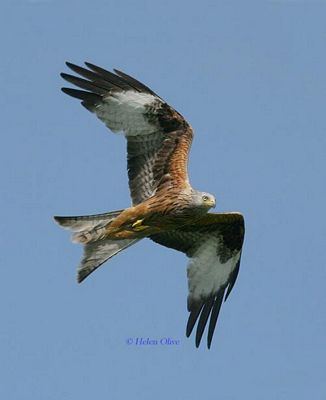"It is as if Shakespeare wished to portray a world in which most men and women are beasts, and only the exceptional few [are fully human]."
—G.B. Harrison
King Lear is no exception to this generalization. There are a number of animal images and metaphors in the text of King Lear which directly relate characters to beasts, making them seem less than human. In at least 25 instances animal imagery is applied, including references to wild geese, bears, monkeys, crabs, snails, goats, horses, and many dog breeds. However, the most pointed and vicious of the animal imagery seems to be directed at Goneril and Regan. In Act 1 Scene 4, Lear says to Regan, "Detested kite! Thou liest!" A kite here is, sadly, not something you fly in the wind on a nice summer's day. A kite is a bird of prey that feeds on small land animals and fish. Already in Act 1 Lear is suggesting that Regan's lies are cold and calculated, to take advantage to smaller, weaker prey like himself. In Act 3 Scene 4 Lear extends the metaphor to include both Goneril and Regan when he despairs at having fathered "those pelican daughters." Pelicans are another bird who live off of fish, snatching them out of the water when they feel the most secure. If Goneril and Regan are the kite and pelican, then Lear must be the fish. His daughters have beaten down on him and taken advantage enough to make him feel small, weak, and fish-like. They hunt and prey on him, and then tear apart his flesh with "sharp-tooth-d unkindness, like a vulture" (Act 2 Scene 4). What might be the most tragic part is that Lear, like a fish in the water, felt safe and secure when he divided his kingdom between his daughters. He never saw their cruel, sharp beaks coming.
Birds aren't the only mean animals that Goneril and Regan can be compared to. They are also likened to serpents and tigers, which are not only both predators, but both animals are hunters which are known for their slyness and quickness. Goneril lies in wait, hidden beneath her confessed love for her father, until she strikes Lear "with her tongue, most serpent-like, upon the very heart" (Act 2 Scene 4). The serpent simile is suited for Lear's unfaithful daughters. Most of the time you never see a snake until it's within striking distance. They blend in with their environment to survive and surprise their prey. Similarly, Goneril and Regan hide their true intentions from Lear by blending into their surroundings, doing and saying what is expected of them and decieving their father. As soon as they are close enough to strike, and are secure in already having what they want, Goneril and Regan reveal their true, serpent-like natures in the way they treat their father. By the time Lear realizes who it really is that is slithering in the grass at his feet, it's too late for him to retreat. His daughters strike and he falls because of his misplaced security and trust.
Just as we saw before in the Merchant of Venice, human nature is better understood when compared to that of animals. Animal imagery helps us to gain a clear picture of the emotions, characteristics, and actions which are meant to be portrayed. In this instance, it helped clarify to me what terrible, awful daughters Goneril and Regan were, and how stupid Lear was for trusting them.



0 comments: